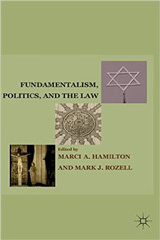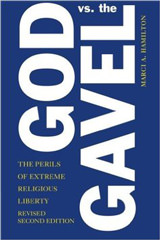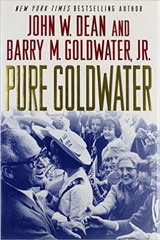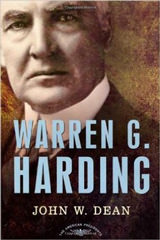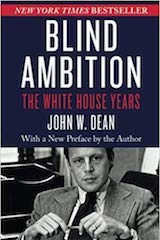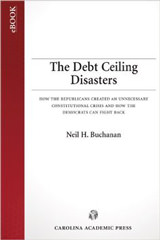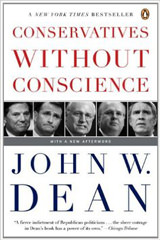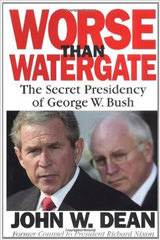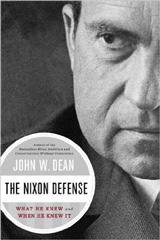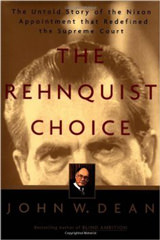Cornell law professor Michael C. Dorf comments on last week’s decision by the U.S. Supreme Court reversing the convictions of two New Jersey officials for their role in the so-called “Bridgegate” scandal of 2013. Although the Court made clear that the underlying conduct was dangerous and wrong, its holding reversing the convictions may effectively permit corrupt bullies to continue to exercise political power, due in part to inadequate responses from other political actors.
Associate Dean for Research & Scholarship and Professor of Law at Touro Law Rodger D. Citron comments on three cases coming up for oral argument before the U.S. Supreme Court. Citron observes that if the other eight justices vote along ideological lines, Chief Justice John Roberts will cast the deciding vote in those pivotal cases.
Austin Sarat—Associate Provost, Associate Dean of the Faculty and William Nelson Cromwell Professor of Jurisprudence and Political Science at Amherst College—comments on yesterday’s decision by the U.S. Supreme Court deferring deciding on a Second Amendment issue presented by a New York City law that prohibited gun owners from transporting their guns out of the city. Sarat points out that the issue that divided the Court’s conservative justices in this case was not whether to radically expand the protections of the Second Amendment, but when and how to do so.
In light of the U.S. Supreme Court’s decision Monday in Ramos v. Louisiana, in which it held that the federal Constitution forbids states from convicting defendants except by a unanimous jury, Cornell law professor Michael C. Dorf discusses the Court’s jurisprudence on retroactivity. Dorf highlights some costs and benefits of retroactivity and argues that the Court’s refusal to issue advisory opinions limits its ability to resolve retroactivity questions in a way that responds to all the relevant considerations.
Illinois Law dean Vikram David Amar and professor Jason Mazzone comment on the U.S. Supreme Court’s recent per curiam decision staying an injunction by a federal district court in Wisconsin, effectively allowing the election in that state to go forward on with the normal timeline for casting ballots in place, despite concerns over the effects of COVID-19. Amar and Mazzone argue that, while the outcome might have been unjust, the plaintiffs in that case likely did not allege a constitutional violation and thus did not properly allege claims suitable to be remedied in federal court.
Cornell law professor Michael C. Dorf comments on the recent per curiam opinion by the U.S. Supreme Court effectively requiring that in-person voting in the Wisconsin primary election go as scheduled and without deadline extension for mail-in ballots, despite the ongoing COVID-19 pandemic. Dorf argues that the decision is the result of partisan politics and petty sticklerism in the Court and will unnecessarily endanger the lives of voting citizens.
Illinois Law dean and professor Vikram David Amar comments on language in a recent U.S. Supreme Court decision, Allen v. Cooperdiscussing constitutional stare decisis in the context of state sovereign immunity. Amar points out some of the problems with the Court’s jurisprudence on state sovereign immunity and Congress’s Section 5 power, and he questions the Allen majority’s embrace of a “special justification” requirement for constitutional stare decisis.
Cornell law professor Michael C. Dorf comments on a recent decision in which the U.S. Supreme Court held that Congress lacked constitutional authority to enact the Copyright Remedy Clarification Act of 1990, which gives individuals the right to sue a state for damages for copyright infringement. Dorf describes the complexity of the Court’s sovereign immunity doctrine and points out the Court’s peculiar failure to simply invalidate a portion of the statute while severing and preserving the valid portions and/or applications of it—which the Court has done in some other cases.
GW Law professors Ira C. Lupu and Robert W. Tuttle explain why the path the U.S. Supreme Court might be about to take in ministerial exception cases—relying on the Free Exercise Clause of the First Amendment—is dangerously misguided. Lupu and Tuttle argue that the ministerial exception rests primarily on the Establishment Clause and is strictly limited to employment decisions about who leads or controls a faith community, or who transmits a faith.
Cornell law professor Sherry F. Colb comments on a case in which the U.S. Supreme Court will consider whether a police officer who shot and hit a fleeing suspect “seized” that suspect, thereby triggering the Fourth Amendment, even though the wounded suspect escaped the police. Colb explains some of the arguments and predicts an outcome that would affirm precedents and offers a compromise between competing constitutional concerns.
Cornell law professor Sherry F. Colb discusses the concept of “conditional irrelevance”—which she first identified in a law review article in 2001—and explains why the concept is useful for understanding the arguments before the U.S. Supreme Court in Kansas v. Glover. Through the lens of conditional irrelevance, Colb explains why the knowledge of one fact (that the owner of the vehicle in that case lacked a valid license) should not itself provide police reasonable suspicion to stop the vehicle.
Cornell law professor Michael C. Dorf considers how much freedom the government has to “level down” in response to a finding of impermissible discrimination. Dorf discusses several of the U.S. Supreme Court’s precedents on leveling down and points out that these decisions are difficult to reconcile with each other and leave unresolved the questions whether and when leveling down is permissible.
UNLV Boyd School of Law professor Leslie C. Griffin comments on the oral argument the U.S. Supreme Court heard this week in Espinoza v. Montana Department of Revenue, which presents the justices with questions about the meaning of the Free Exercise and Establishment Clauses of the First Amendment. Griffin describes the questioning by the justices and predicts that the outcome in this case will demonstrate how many justices still believe in the separation of church and state.
Cornell law professor Michael C. Dorf offers one interpretation of Chief Justice John Roberts’s annual year-end report on the federal judiciary—that the Chief Justice intends to serve as a modest counterbalance to President Trump. Dorf supports his interpretation with text and context of the year-end report but offers his cautious praise to the Chief Justice with a few important caveats as well.
Cornell law 3L Jareb Gleckel and professor Sherry F. Colb discuss, in point-counterpoint style, one aspect of the legal issue presented in Altitude Express v. Zarda—in which the U.S. Supreme Court will decide whether Title VII of the Civil Rights Act of 1964 prohibits employers from discriminating against their employees based on sexual orientation. Gleckel argues that sexual orientation discrimination does not qualify as sex discrimination under the text of Title VII and describes a hypothetical example in support of his argument. In response, Colb first addresses Gleckel’s formalistic argument and then contends, even assuming Gleckel’s premise to be true, that because the policy at issue in Zarda discriminates between men and women both formally and in a manner that inflicts a gender-relevant injury, it violates the text of Title VII.
Cornell law professor Michael C. Dorf explains why Democratic presidential hopeful Pete Buttigieg and his critics are both wrong about the U.S. Supreme Court having become especially political. Dorf points out that since the Court’s 1803 decision in Marbury v. Madison the Court has been highly political, and the true problem lies with the unprecedented polarization of the political parties—not with the Court or the appointments process.
Cornell law professor Sherry F. Colb why the question whether a state may abolish the insanity defense (presently before the Supreme Court) is similar to the question whether a state should adopt so-called animal welfare laws. Colb argues that both the insanity defense and animal welfare measures provide the public with a sense of moral relief but only if we willfully ignore the reality of how animals and criminal defendants are treated.
Illinois law dean and professor Vikram David Amar comments on a recent decision by a panel of state-court judges in North Carolina striking down partisan gerrymandering schemes as violating that state’s constitution. Amar had argued after the U.S. Supreme Court’s decision in Rucho v. Common Cause that state courts would have to address partisan gerrymandering on “independent and adequate state-law grounds” (rather than on federal constitutional grounds), which is exactly what the North Carolina court did.
Cornell law professor Sherry F. Colb comments on a decision the U.S. Supreme Court issued toward the end of the last term, in which a majority of the Court ruled that as long as police have probable cause for an arrest, it does not matter if their actual motivation for arresting someone violates the person’s First Amendment rights. Colb considers whether such pretextual, speech-based arrests are a problem, how they differ from other pretextual arrests, and how the ruling in this case resembles the law of a seemingly different area—post-conviction incarceration for convicted criminals.
Guest columnist Austin Sarat—Associate Provost, Associate Dean of the Faculty and William Nelson Cromwell Professor of Jurisprudence and Political Science at Amherst College—expresses concern that Democrats are joining President Trump in undermining the public’s trust in the judiciary. Sarat specifically discusses an amicus brief filed with the U.S. Supreme Court by five Democratic senators in which the senators criticize the bias and partisanship of the Court’s conservative justices.





















